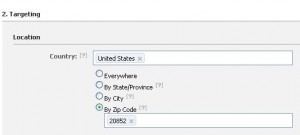Now that Google+ is open to businesses, many are trying to figure out the best way to utilize this new social media portal (including DealerOn). I’ve gathered some of the more common mistakes that businesses are making to shorten the learning curve for auto dealerships.
Like all other social media sites, not posting on a regular basis can hurt your marketing efforts. Consistently providing visitors with quality, worthwhile content is the best way to attract (and keep) potential dealership customers engaged in your social sharing.
Google+ really lends itself to sharing photos, so make sure you take full advantage. Switch up your text posts with photos of your vehicles, dealership, and staff. Make sure your profile photo identifies your dealership to help ensure your visitors know they’ve found the right Google+ page.
To further help identify your profile, make sure your tagline is clear and descriptive. Use it as a way to stand out from other dealerships and make it very clear to visitors that this is an official page for your dealership.
One of the great things about Google+ is the ease in which you can segment your viewers…so make sure that you do! Consider separating potential customers from those that have previously bought from your dealership, or segment those that bought used cars from those that bought new. Take advantage of the ability to tailor the information you are sharing with your visitors.
Those that are using Google+, what mistakes have you made and learned from so far?






